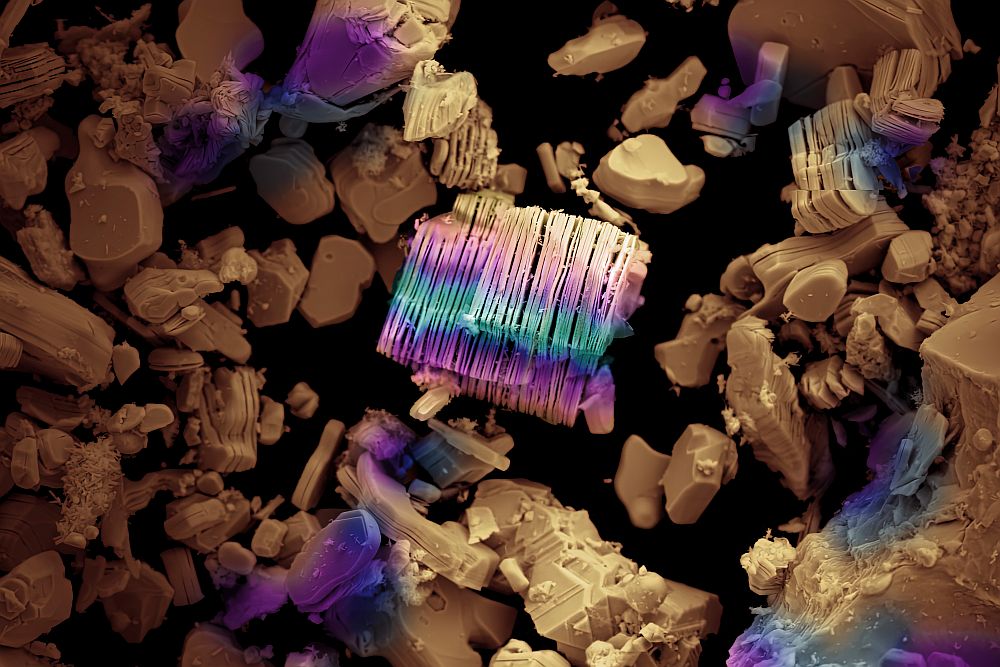[Image above] Local temperature increases occurring as a result of current flow in active regions of electronic devices can lead to decreased performance. Materials with high thermal conductivity are used to conduct heat away from the hot regions. Credit: US Naval Research Laboratory.
The ability of ceramics to withstand high temperatures is one of their most well known and exploited attributes. Now scientists at the US Naval Research Laboratory, Washington, D.C., and Boston College have used a predictive first principles approach to identify a novel ceramic that might take away from electronic devices even better than diamond, the current thermal conduction champ.
According to this news release, cubic boron arsenide has extraordinarily high room-temperature thermal conductivity—greater than 2,000 W/m·K, or about the same as the thermal conductivity of diamond and graphite.
“As microelectronic devices become smaller, faster, and more powerful, thermal management is becoming a critical challenge,” the release says. “This work provides new insight into the nature of thermal transport at a quantitative level and predicts a new material, with ultra-high thermal conductivity, of potential interest for passive cooling applications.”
The researchers calculated the thermal conductivity of cubic III-V boron compounds by applying parameter-free computational techniques, which have been used more often to predict electronic properties, according to Thomas L. Reinecke, physicist in NRL’s Electronics Science and Technology Division. “In the last few years, with contributions from the NRL team, ‘ab initio’ quantitative techniques have been developed for thermal transport,” he says in the release. “These techniques open the way to a fuller understanding of the key physical features in thermal transport and to the ability to predict accurately the thermal conductivity of new materials.”
In electrical insulators like diamond and boron arsenide, phonons (vibrational waves) transport heat of the constituent atoms. The scattering of these waves causes the insulating materials’ resistance to heat flow. The NRL scientists discovered interactions between some vibrational properties of boron arsenide that cause the material’s properties to differ from the values most often used to estimate insulator thermal conductivity. “These features cause scatterings between vibrational waves to be far less likely than is typical in a certain range of frequencies, which in turn allows large amounts of heat to be conducted in this frequency range,” the release explains.
“If these exciting results are verified by experiment, it will open new opportunities for passive cooling applications with boron arsenide, and it would demonstrate the important role that such theoretical work can play in providing guidance to identify new high thermal conductivity materials,” Reinecke says. Other thermal conductivity calculations made by the group are said to be in good agreement with available experimental results for a wide range of materials.
Results of the work were recently published in an article in Physics Review Letters (DOI: 10.1103/PhysRevLett.111.025901).
Author
Jim Destfani
CTT Categories
- Basic Science
- Electronics
- Modeling & Simulation
Related Posts
‘Fairy circles’ may help mark natural underground hydrogen deposits
September 18, 2025



